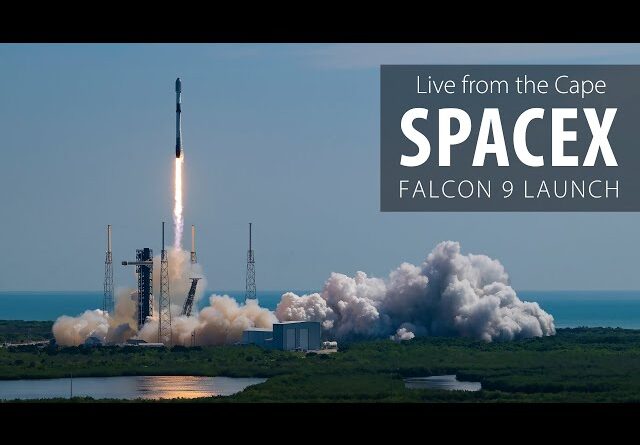SpaceX Readies for Starship Flight 11 After Successful Flight 10
Closing on the heels of the fruitful Starship Flight 10, SpaceX is readying themselves for Starship Flight 11. In an astonishingly brief span of ten days following Flight 10, SpaceX’s Super Heavy booster has been transported to the launch site for an impending static fire experiment. The performance of the Flight 10 booster was largely up to par, but with a few anomalies, such as an engine failure during launch and observable malfunctions in the grid fins during its descent to the ocean.
Specifics regarding Starship Flight 10 are yet to be elucidated by SpaceX. The timeline for Starship Flight 11 will be influenced by the speed of pre-launch drills, with the earliest speculated launch time being in October. Starship Flight 11 is expected to symbolize the end of the second-generation lineup of SpaceX’s booster rockets and spacecraft.
Second-generation boosters have demonstrated steady performance through numerous flight tests. However, their upper-stage counterparts haven’t had quite the same track record. The inaugural successful flight was Flight 10, wherein the spaceship accomplished a gentle descent into the waters of the Indian Ocean.
Local news sources have released footage showcasing the transition of the Flight 11 booster to the launch site for a static fire experiment. As early as tomorrow, the Super Heavy static fire test of Starship Flight 11 could take place. This will showcase SpaceX’s second reuse of rocket boosters, the first instance being after Flight 7.
Flight 11 is set to repurpose the booster that was utilized in Flight 8. However, it is important to note that during Flights 7, 8, and 9, the spaceship was unable to either establish its suborbital trajectory or to re-enter Earth’s atmosphere. Beginning with Flight 7, the spacecraft experienced internal vibrations that resulted in a propellant leak and consequently, a premature engine shutdown.
Flight 8 had its own share of drama due to an engine failure that sent the rocket spinning out of control. SpaceX however, issued a statement that all fragments of the spaceship fell within the earmarked boundaries, posing no threat to life or property on the ground.
With the advent of Flight 7, SpaceX held high aspirations for the second-generation spacecraft. Their plans included deploying Starlink simulator satellites, reigniting a Raptor engine in space, and testing new heat shield tiles. However, the suborbital trajectory during the two test flights was not achieved, rendering SpaceX unable to conduct the tests.
The spaceship in Starship Flight 9 showed some advancement as it managed to attain suborbital trajectory. However, its inability to re-enter the atmosphere meant that SpaceX was unable to test its heat shield. Neither could the Starlink simulators be deployed, nor could the Raptor engine re-ignite itself in space, marking the limit of its progress.
Contrastingly, Starship Flight 10 was viewed as a remarkable achievement. The spacecraft underwent successful detachment from the booster and smoothly carried out its mission of deploying the Starlink simulators and reigniting the Raptor engine. Displaying familiar breathtaking plasma vistas during entry, the Starship made a successful landing in the Indian Ocean.
Starship Flight 10 marked the maiden flight wherein the spacecraft penetrated the atmosphere. Consequently, its heat shield tiles were observed to be covered in orange and white deposits post-landing. Elon Musk later clarified that this residue was actually due to the presence of metallic tiles and certain areas where tiles were purposely omitted by SpaceX to examine the material underneath them.
With Flight 11 most likely representing the second-generation booster and rocket’s final flight, SpaceX is set to premiere the third-generation Starships in Flight 12. The timeline for this transition is ambiguous, but local media footage indicates the manufacturing of these new rockets is underway.
Further footage from local media sources shows that SpaceX has successfully completed the construction of the front section of its third-generation Super Heavy booster. This topmost portion of the rocket, referred to as the ‘forward’, accommodates the interstage at its peak, a critical component that directs the spacecraft’s thrust away from the internals of the booster during stage separation.
The third-generation rockets possess an updated interstage – a crucial modification according to Musk. Earlier this year, Musk shared insights in a presentation, stating that the new interstage would excel in diverting thrust more efficiently.
Recently, SpaceX’s Starship test flights have shifted their attention to optimizing efficiency. To maximize the Super Heavy booster’s efficiency, closeable interstage vents were incorporated in Flight 9 to lower fuel consumption and enhance its range. In previous flights, the booster was set to fly at a higher attack angle to increase the air resistance it met, thereby reducing the fuel needed by the engines to decelerate before landing.
For the upcoming third-generation Starship rockets, the booster’s grid fins have been reconstructed. These fins, a characteristic feature of SpaceX’s rockets, are specifically designed for superior attack angles in the new model. As per SpaceX, the revamped grid fins are larger, providing better control over the booster, and they will be positioned lower on the rocket to accommodate their internal parts inside the rocket’s tank.

